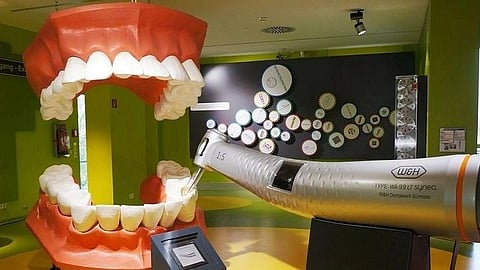Why are RCTs needed?
When you get a sweet tooth and eat sugary foods, the food debris remains in the crevices, pits and fissures of teeth. The bacteria (oral flora) in your mouth metabolise sucrose and other carbohydrates to produce acids. These acids dissolve enamel causing cavities/caries. The cavities that do not involve pulp are treated by a routine dental filling. If the holes or cavities are not intervened by the dentist at an early stage these progress into the dentin and then into the pulp tissue or root of the tooth. This leads to the spread of infection in the pulp giving you a toothache. Not all infections result in pain, sometimes a crack in a tooth can open gates for bacteria. PAIN isn’t the only reason you should go to your endodontist!
TELLTALE SIGNS YOU MIGHT NEED RCT
- Toothache.
- Sensitivity to hot and cold foods.
- Lingering pain after eating.
- Swollen gums near the tooth, with pus oozing.
- Discoloration of the tooth.
- Pain on biting.
- Tooth with large cavitation/hole/crack.
A routine dental examination won’t hurt your pockets or teeth. Most of the time symptoms don’t appear unless the infection reaches an advanced stage.
THE TOOTH IS A FASCINATING STRUCTURE OF HARD AND SOFT TISSUES:
The tooth is hollow inside, beneath the hard layers of enamel and dentin with a network of pulp tissue, blood vessels, and nerves. The pulp chamber houses soft pulpal tissue, and blood vessels, which is the source of nourishment for teeth. The floor of the pulp chamber has orifices that lead to root canals.
THIS ARTICLE WILL TAKE YOU INTO THE PULP SPACE-TO THE SOURCE OF PAIN
The tooth crown has a hard layer of ENAMEL which is harder than a diamond. Enamel is made up of mineral hydroxyapatite crystals, and calcium phosphate with no water. It is ironic how diamond-hard enamel is still invaded by bacteria. Dentin lies underneath the enamel. It is mineralized tissue with water content. In the core of teeth lies pulp tracing down along the length of roots.
WHY PULP IN THE TOOTH IS- A PAIN IN THE APEX!
NEUROPHYSIOLOGY OF PAIN
The pulp tissue is highly innervated and vascularised.
It is enclosed in a chamber which leaves no space for the release of pressure resulting in pain. The increased tooth pressure acts directly on sensory nerve receptors. During infection, the pulp tissue gets inflamed and compressed under the hard layers of enamel and dentin and stimulates free nerve fibres (nociceptors). The blood flow in the pulp is more than the surrounding areas i.e. 20-60 mL/min/100g pulp tissue. The pulp tissue lacks alternate/collateral blood circulation thus restricting sufficient blood flow to the site of infection.


